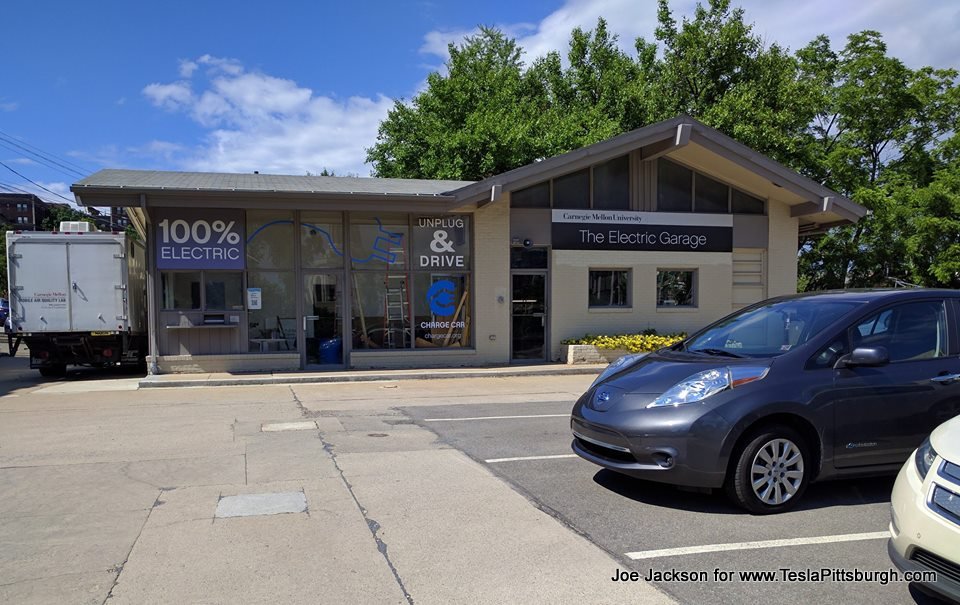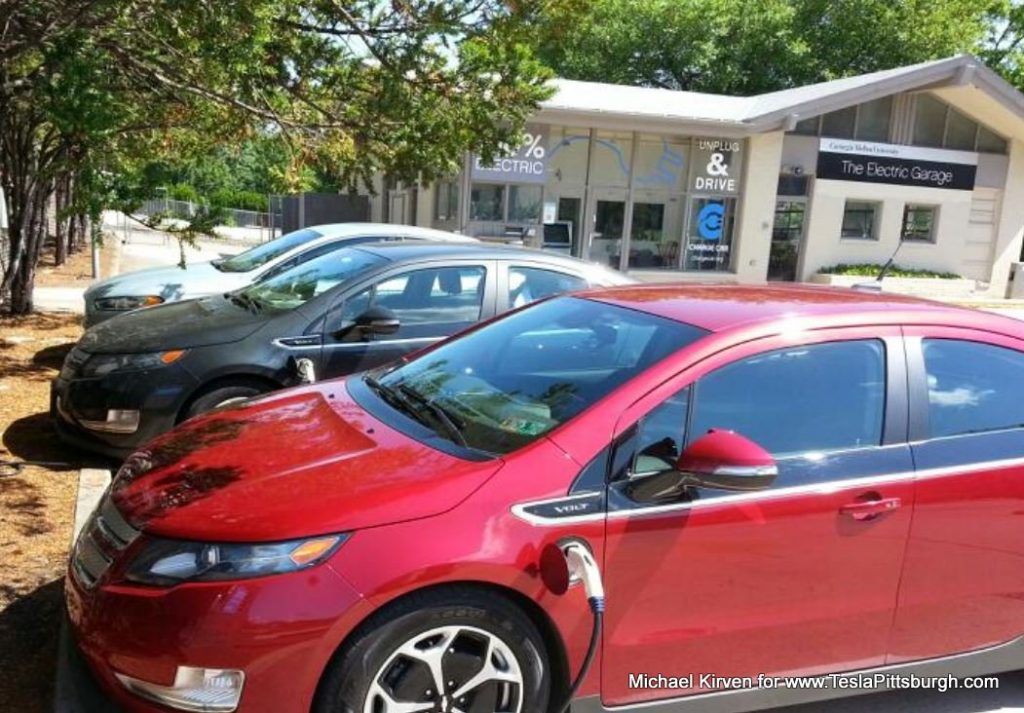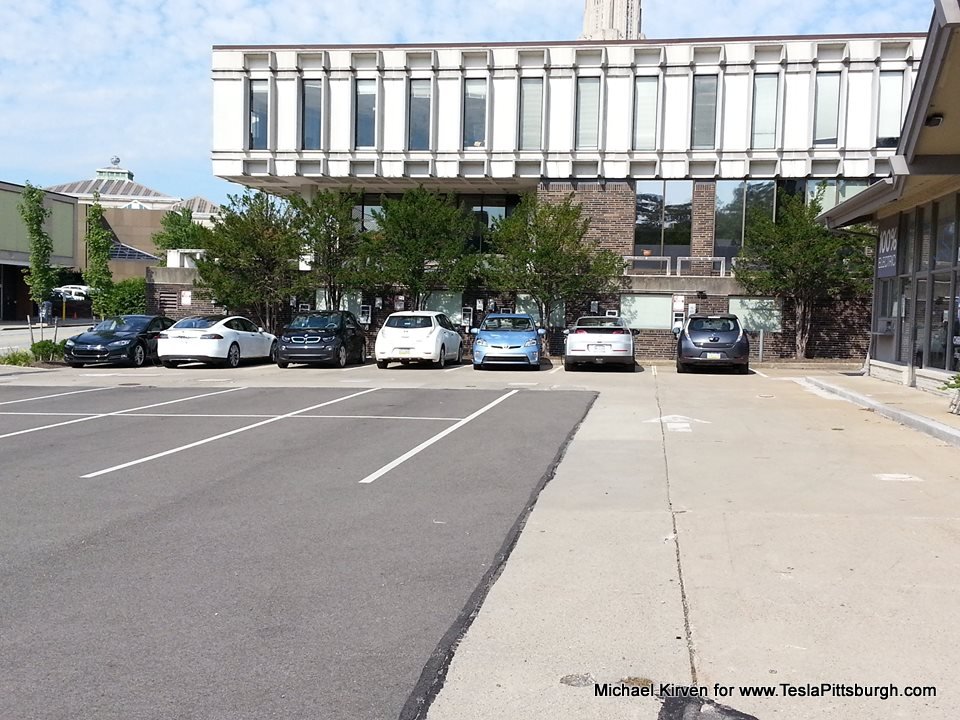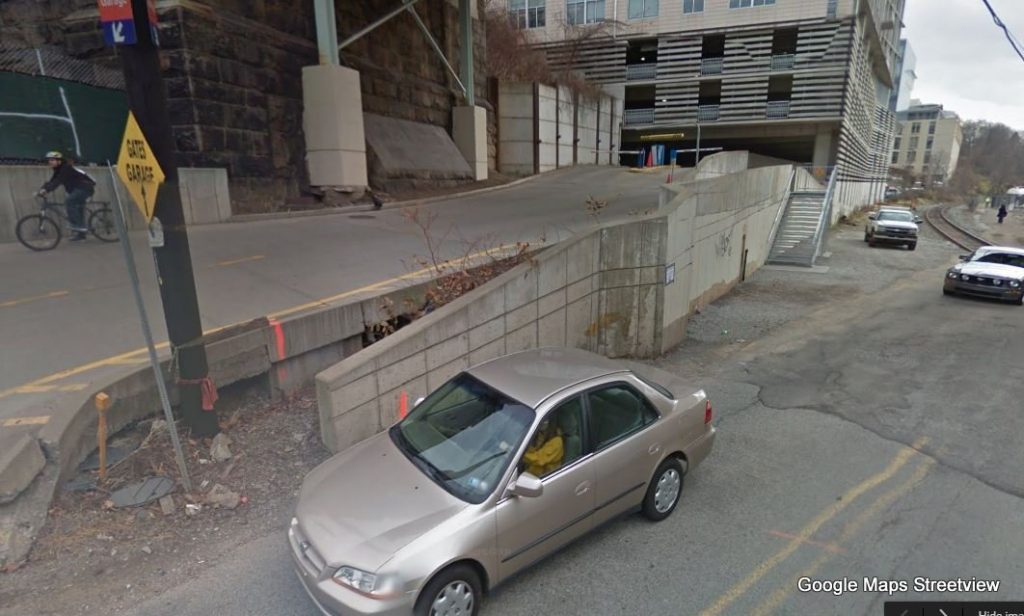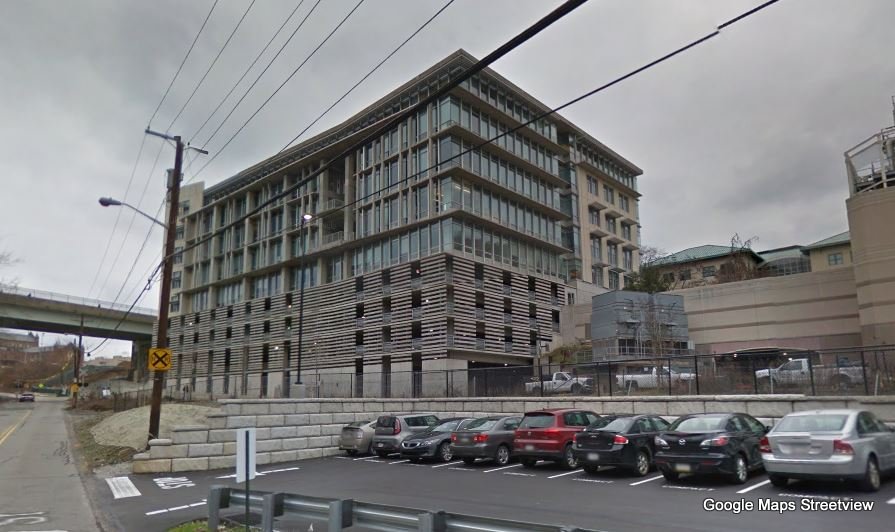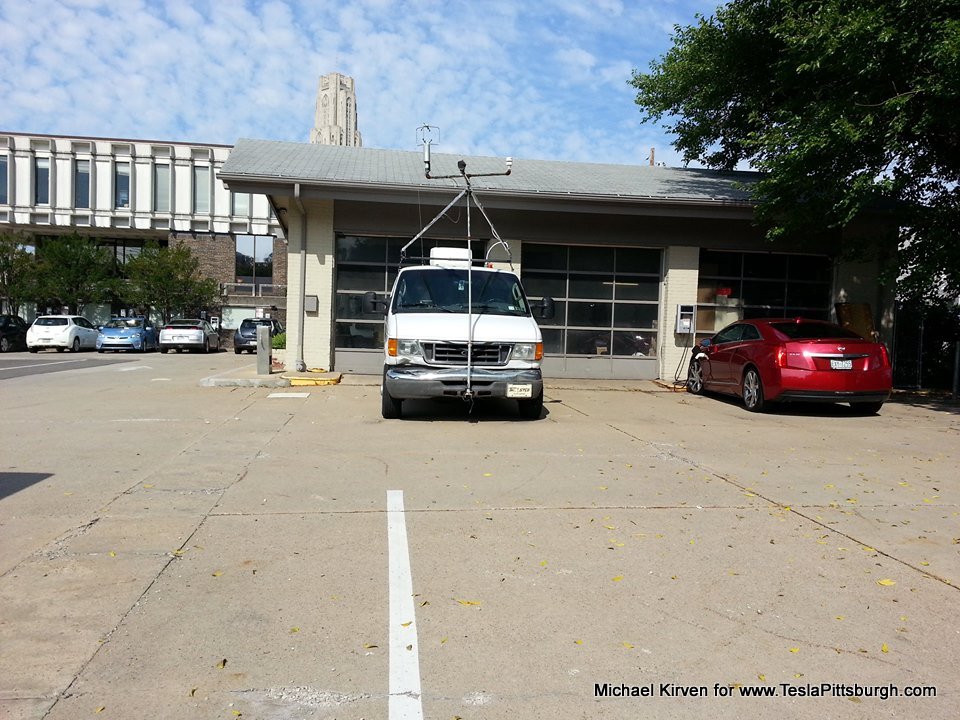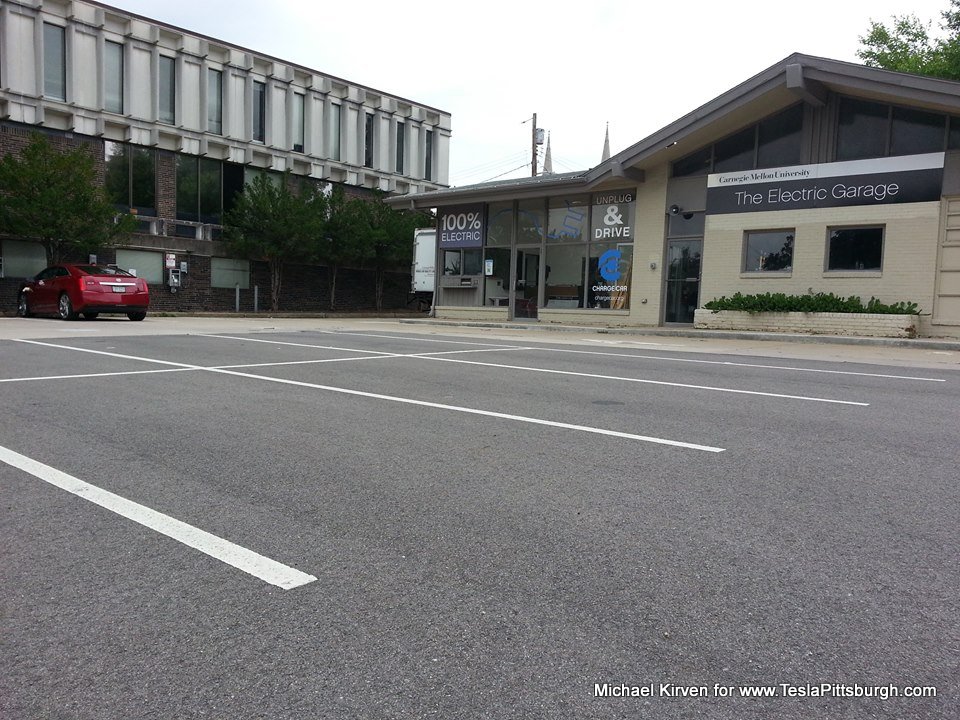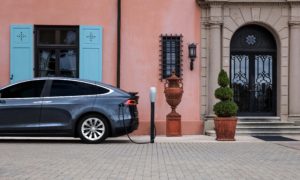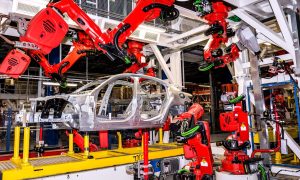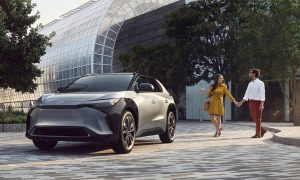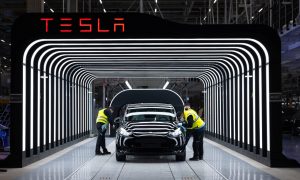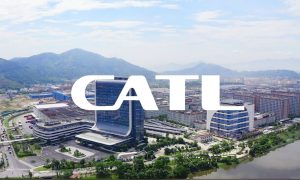News
Tesla destination charging facility, also Pittsburgh EV landmark will be demolished
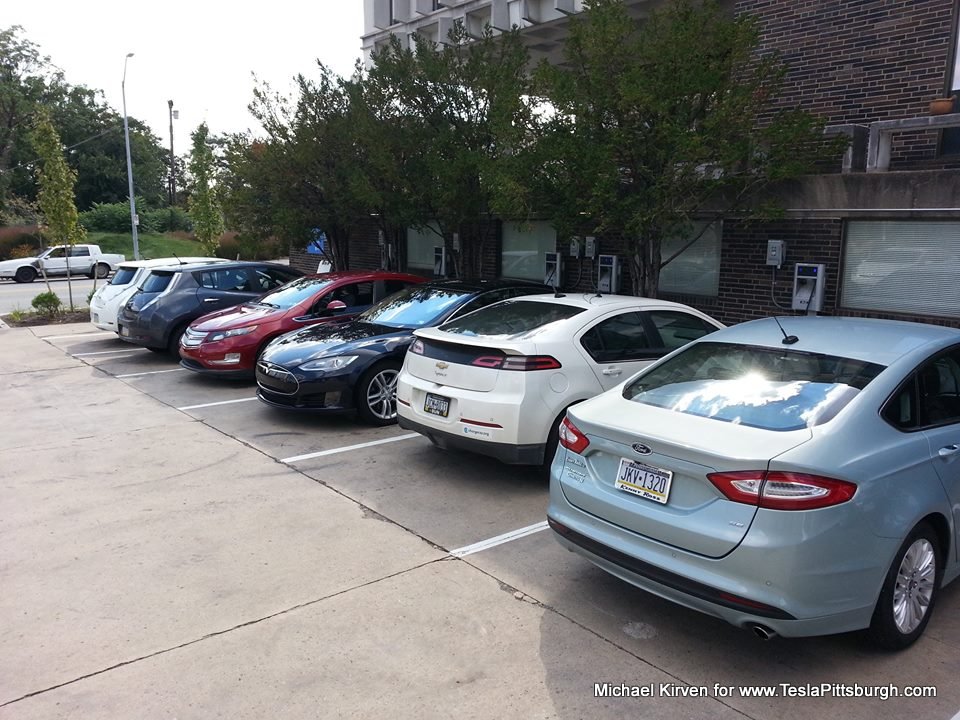
Vast construction projects at Pittsburgh’s Carnegie Mellon University will soon engulf a site that became a landmark in the development of electric vehicles in western Pennsylvania. It was a pioneering facility and the largest charging site in the region for many years.
The Electric Garage’s chargers are being relocated immediately with demolition of the site to begin in July.
At its peak, the Electric Garage boasted eight J1772 Level 2 chargers offering 203V at 30 amps. In 2014, a Tesla HPWC with 40 amp charging was added. Charging and parking was free to the public for up to four hours a session– a welcome oasis in the otherwise congested and paid parking of Oakland. It was easily the largest charging site in western Pennsylvania for most of its life and was open 24 hours/7 days a week on a first-come, first-serve basis. Non-charging parking spots on the site were marked as permit only.
The original six Eaton chargers were installed in 2012, using funding provided from the Pennsylvania Department of Environmental Protection’s Office of Energy and Technology Deployment which had a special mandate from the Office of Acronym Abatement at the Bureau of Ridiculously Long and Expansive Government Agency Naming Commission Department.
Originally built as an Exxon gas station, the Electric Garage was the invention of CMU robotics professor Illah Nourbakhsh. The university bought the property in 2009 and Nourbakhsh transformed it soon after into the workshop for the ChargeCar program. ChargeCar worked to further and develop EV technology, converting several vehicles and working out designs for regenerative braking. The industry’s pace of development soon overran much of ChargeCar’s work as more manufacturers brought EVs into mass production.
Undaunted, ChargeCar hosted numerous community outreach events to showcase the everyday feasibility of EVs to the general public. The site then morphed into a charging station and ChargeCar moved from primarily making gas-electric conversions to educating local mechanics in how to repair EVs.
Notice of the Electric Garage’s potential demise first bubbled up in May 2014, just months after the Tesla HPWC was installed. For several years, Tesla would use the Electric Garage as their main charging facility for Pittsburgh Test Drive events. There was no official Tesla presence in the city and Superchargers were too far from downtown. The proximity of the Electric Garage to the test drive events’ hosting facilities and hotels (and its number of chargers) made it an ideal overnight parking area for a small fleet of Teslas, hungry after a day of being pummeled by curious Pittsburghers.
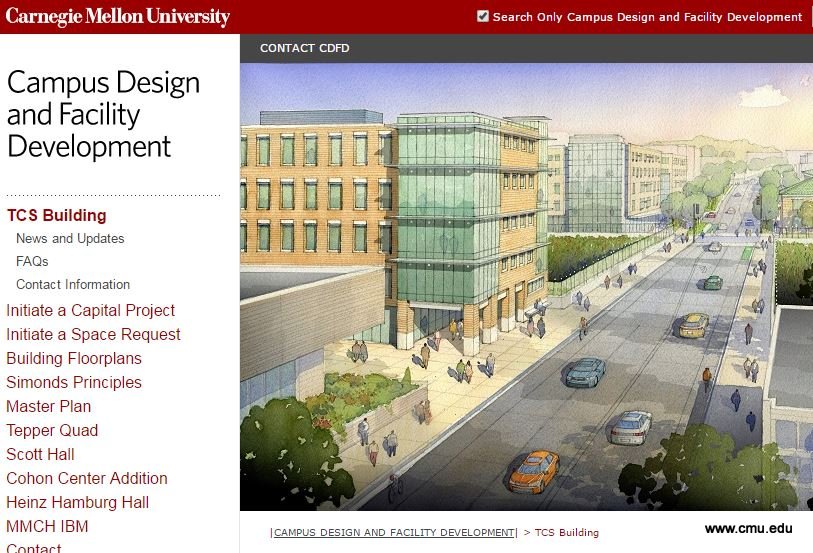
Taking the place of the Electric Garage will be CMU’s new Tata Consultancy Services (TCS) Building. The 40,000 square foot structure is designed by Skidmore, Owings & Merrill and will be built by Mascaro Construction. CMU described the new mixed-use building as “a new home for the university stores, a dining facility on the ground floor, and academic or administrative office and shelled space. The stand-alone structure will house state-of-the-art facilities, providing collaborative spaces for the CMU community.” CMU expects to spend $22.5 million on the project, which should break ground late this year.
Demolition of the Electric Garage will take place in July. The university has indicated that the chargers will be relocated to other places on campus, though EV drivers will likely have limited access the parking garages that will house some of them. It is also unlikely that all of those will remain available to the general public.
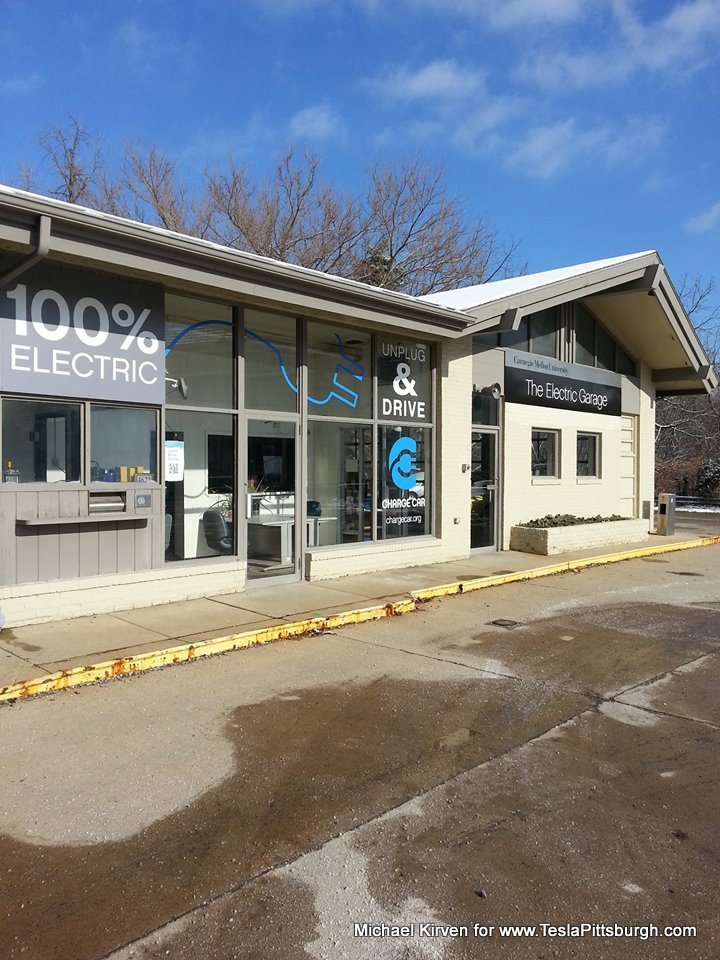
Current plans are as follows: 2 chargers move to the East Campus Garage, 2 chargers to the Dithridge Garage and the CIC Garage will have 5 stations.
If any are publicly available, it would most likely be the 5 chargers at the CIC garage. The notice from CMU Parking & Transportation Services indicates that these 5 chargers “will be located on the outside prior to entering the garage.” Given the awkward placement of the garage in relation to the campus and nearby train tracks, that could be interpreted a number of different ways. The approach roads to the garage are narrow, but there could be room for creative placement and there is a more hospitable lot close by. It also seems probable that the Tesla HPWC could be reappearing at this location. CMU has not yet responded to requests for clarification.
The passing of the Electric Garage “era” is lamentable, but CMU’s commitment to relocate the chargers is to be commended. Many businesses would have simply shoved them into a warehouse (or worse). It is an unfortunate development for EV drivers who have enjoyed both free parking and charging in Oakland, but with CMU’s inherent focus on technology there is hope for more charging stations in the future.
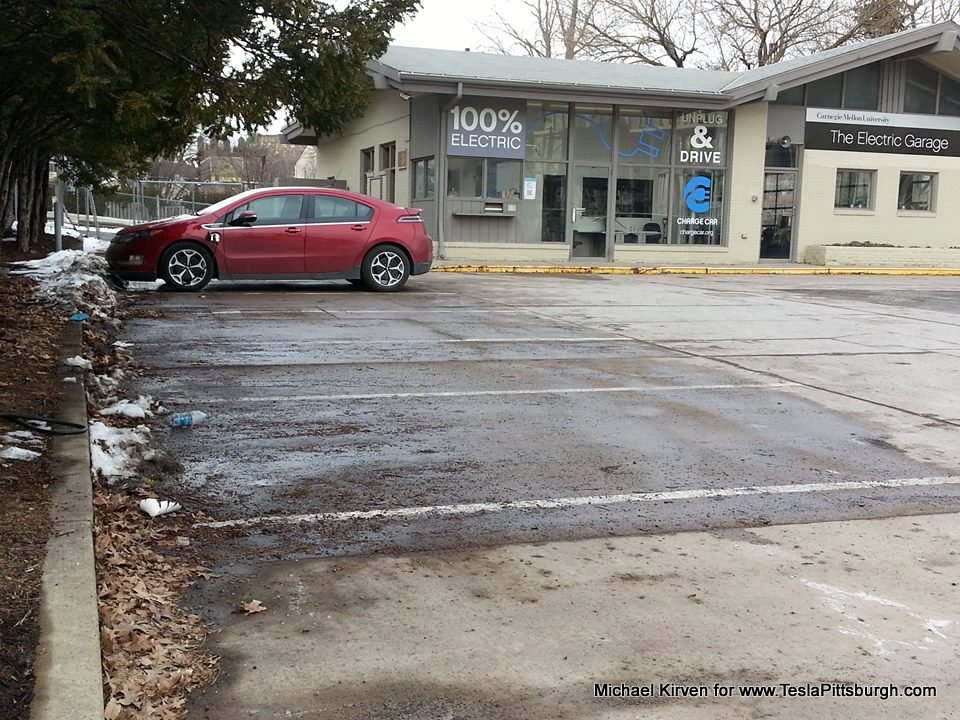
For local Tesla owners, the chargers were more about convenience than necessity. Long distance travelers are similarly unaffected by the change for the most part (ever since the Somerset and Cranberry Superchargers went online). With the opening of Ross Park Mall’s Tesla store this summer– complete with outdoor HPWCs– and the expected opening of a Pittsburgh Service Center later this year, there is also no longer a need for test drive fleets to recharge overnight in Oakland.
Elon Musk
Tesla Supercharger Diner food menu gets a sneak peek as construction closes out
What are you ordering at the Tesla Diner?

The Tesla Supercharger Diner in Los Angeles is nearing completion as construction appears to be winding down significantly. However, the more minor details, such as what the company will serve at its 50s-style diner for food, are starting to be revealed.
Tesla’s Supercharger Diner is set to open soon, seven years after CEO Elon Musk first drafted the idea in a post on X in 2018. Musk has largely come through on most of what he envisioned for the project: the diner, the massive movie screens, and the intended vibe are all present, thanks to the aerial and ground footage shared on social media.
We already know the Diner will be open 24/7, based on decals placed on the front door of the restaurant that were shared earlier this week. We assume that Tesla Optimus will come into play for these long and uninterrupted hours.
The Tesla Diner is basically finished—here’s what it looks like
As far as the food, Tesla does have an email also printed on the front door of the Diner, but we did not receive any response back (yet) about what cuisine it will be offering. We figured it would be nothing fancy and it would be typical diner staples: burgers, fries, wings, milkshakes, etc.
According to pictures taken by @Tesla_lighting_, which were shared by Not a Tesla App, the food will be just that: quick and affordable meals that diners do well. It’s nothing crazy, just typical staples you’d find at any diner, just with a Tesla twist:
Tesla Diner food:
• Burgers
• Fries
• Chicken Wings
• Hot Dogs
• Hand-spun milkshakes
• And more https://t.co/kzFf20YZQq pic.twitter.com/aRv02TzouY— Sawyer Merritt (@SawyerMerritt) July 17, 2025
As the food menu is finalized, we will be sure to share any details Tesla provides, including a full list of what will be served and its prices.
Additionally, the entire property appears to be nearing its final construction stages, and it seems it may even be nearing completion. The movie screens are already up and showing videos of things like SpaceX launches.
There are many cars already using the Superchargers at the restaurant, and employees inside the facility look to be putting the finishing touches on the interior.
🚨 Boots on the ground at the Tesla Diner:
— TESLARATI (@Teslarati) July 17, 2025
It’s almost reminiscent of a Tesla version of a Buc-ee’s, a southern staple convenience store that offers much more than a traditional gas station. Of course, Tesla’s version is futuristic and more catered to the company’s image, but the idea is the same.
It’s a one-stop shop for anything you’d need to recharge as a Tesla owner. Los Angeles building permits have not yet revealed the date for the restaurant’s initial operation, but Tesla may have its eye on a target date that will likely be announced during next week’s Earnings Call.
News
Tesla’s longer Model Y did not scale back requests for this vehicle type from fans
Tesla fans are happy with the new Model Y, but they’re still vocal about the need for something else.

Tesla launched a slightly longer version of the Model Y all-electric crossover in China, and with it being extremely likely that the vehicle will make its way to other markets, including the United States, fans are still looking for something more.
The new Model Y L in China boasts a slightly larger wheelbase than its original version, giving slightly more interior room with a sixth seat, thanks to a third row.
Tesla exec hints at useful and potentially killer Model Y L feature
Tesla has said throughout the past year that it would focus on developing its affordable, compact models, which were set to begin production in the first half of the year. The company has not indicated whether it met that timeline or not, but many are hoping to see unveilings of those designs potentially during the Q3 earnings call.
However, the modifications to the Model Y, which have not yet been officially announced for any markets outside of China, still don’t seem to be what owners and fans are looking forward to. Instead, they are hoping for something larger.
A few months ago, I reported on the overall consensus within the Tesla community that the company needs a full-size SUV, minivan, or even a cargo van that would be ideal for camping or business use.
Tesla is missing one type of vehicle in its lineup and fans want it fast
That mentality still seems very present amongst fans and owners, who state that a full-size SUV with enough seating for a larger family, more capability in terms of cargo space for camping or business operation, and something to compete with gas cars like the Chevrolet Tahoe, Ford Expedition, or electric ones like the Volkswagen ID.BUZZ.
We asked the question on X, and Tesla fans were nearly unanimously in support of a larger SUV or minivan-type vehicle for the company’s lineup:
🚨 More and more people are *still* saying that, despite this new, longer Model Y, Tesla still needs a true three-row SUV
Do you agree? https://t.co/QmbRDcCE08 pic.twitter.com/p6m5zB4sDZ
— TESLARATI (@Teslarati) July 16, 2025
Here’s what some of the respondents said:
100% agree, we need a larger vehicle.
Our model Y is quickly getting too small for our family of 5 as the kids grow. A slightly longer Y with an extra seat is nice but it’s not enough if you’re looking to take it on road trips/vacations/ kids sports gear etc.
Unfortunately we…
— Anthony Hunter (@_LiarsDice_) July 17, 2025
Had to buy a Kia Carnival Hybrid because Tesla doesn’t have a true 3 row vehicle with proper space and respectable range. pic.twitter.com/pzwFyHU8Gi
— Neil, like the astronaut (@Neileeyo) July 17, 2025
Agreed! I’m not sure who created this but I liked it enough to save it. pic.twitter.com/Sof5nMehjS
— 🦉Wise Words of Wisdom – Inspirational Quotes (IQ) (@WiseWordsIQ) July 16, 2025
Tesla is certainly aware that many of its owners would like the company to develop something larger that competes with the large SUVs on the market.
However, it has not stated that anything like that is in the current plans for future vehicles, as it has made a concerted effort to develop Robotaxi alongside the affordable, compact models that it claims are in development.
It has already unveiled the Robovan, a people-mover that can seat up to 20 passengers in a lounge-like interior.
The Robovan will be completely driverless, so it’s unlikely we will see it before the release of a fully autonomous Full Self-Driving suite from Tesla.
Energy
Tesla launches first Virtual Power Plant in UK – get paid to use solar
Tesla has launched its first-ever Virtual Power Plant program in the United Kingdom.

Tesla has launched its first-ever Virtual Power Plant program in the United Kingdom. This feature enables users of solar panels and energy storage systems to sell their excess energy back to the grid.
Tesla is utilizing Octopus Energy, a British renewable energy company that operates in multiple markets, including the UK, France, Germany, Italy, Spain, Australia, Japan, New Zealand, and the United States, as the provider for the VPP launch in the region.
The company states that those who enroll in the program can earn up to £300 per month.
Tesla has operated several VPP programs worldwide, most notably in California, Texas, Connecticut, and the U.S. territory of Puerto Rico. This is not the first time Tesla has operated a VPP outside the United States, as there are programs in Australia, Japan, and New Zealand.
This is its first in the UK:
Our first VPP in the UK
You can get paid to share your energy – store excess energy in your Powerwall & sell it back to the grid
You’re making £££ and the community is powered by clean energy
Win-win pic.twitter.com/evhMtJpgy1
— Tesla UK (@tesla_uk) July 17, 2025
Tesla is not the only company that is working with Octopus Energy in the UK for the VPP, as it joins SolarEdge, GivEnergy, and Enphase as other companies that utilize the Octopus platform for their project operations.
It has been six years since Tesla launched its first VPP, as it started its first in Australia back in 2019. In 2024, Tesla paid out over $10 million to those participating in the program.
Participating in the VPP program that Tesla offers not only provides enrolled individuals with the opportunity to earn money, but it also contributes to grid stabilization by supporting local energy grids.
-

 Elon Musk1 day ago
Elon Musk1 day agoWaymo responds to Tesla’s Robotaxi expansion in Austin with bold statement
-

 News1 day ago
News1 day agoTesla exec hints at useful and potentially killer Model Y L feature
-

 Elon Musk2 days ago
Elon Musk2 days agoElon Musk reveals SpaceX’s target for Starship’s 10th launch
-

 Elon Musk3 days ago
Elon Musk3 days agoTesla ups Robotaxi fare price to another comical figure with service area expansion
-

 News1 day ago
News1 day agoTesla’s longer Model Y did not scale back requests for this vehicle type from fans
-

 News1 day ago
News1 day ago“Worthy of respect:” Six-seat Model Y L acknowledged by Tesla China’s biggest rivals
-

 News2 days ago
News2 days agoFirst glimpse of Tesla Model Y with six seats and extended wheelbase
-

 Elon Musk2 days ago
Elon Musk2 days agoElon Musk confirms Tesla is already rolling out a new feature for in-car Grok

